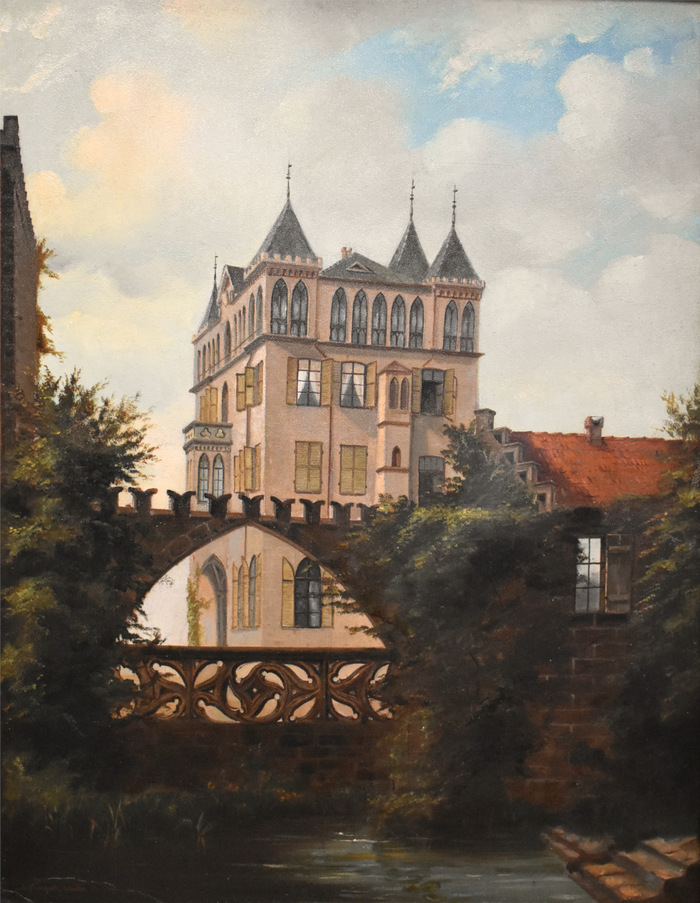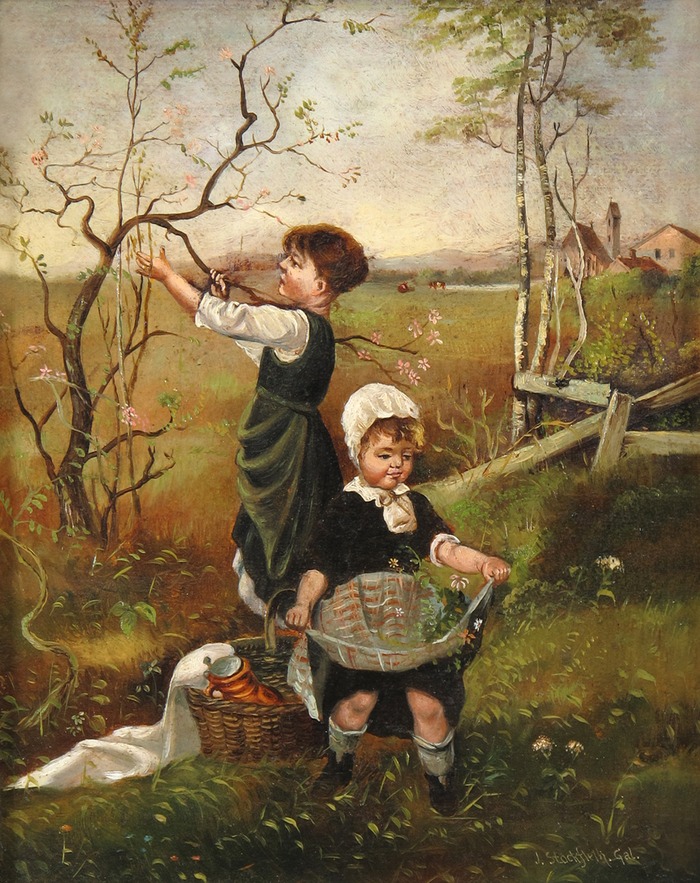Julius Stockfleth "Woman In Town"
-
- Julius Stockfleth
- (1857 - 1935)
- Galveston Artist
- Image Size: 24 x 18
- Frame Size: 29 x 23
- Medium: Oil
- Dated 1887
- "Woman In Town"
- Contact for Price & Info
- View All By This Artist
Details
Signed, Dated, and Galveston
-
-
Biography
Julius Stockfleth (1857 - 1935)
Julius Stockfleth, marine and landscape painter, was born in Wyk auf
Föhr, Schleswig-Holstein, on January 29, 1857, son of Friedrich August
and Louise (Hansen) Stockfleth. His father was a ship joiner and sailor,
and his mother was an "innkeeper for the suite of Christian VIII" of
Denmark. The parents immigrated to the United States during the 1870s.
Stockfleth's early artistic training occurred in Wyk, where he was
apprenticed to a local painter.
He immigrated to the United
States in 1883 and settled in Galveston two years later. He listed
himself as a portrait painter until he returned to Germany in 1907,
where he continued his art career in Wyk until his death. He never
married. During two decades in Texas, Stockfleth produced a valuable
artistic record of historic Galveston. His paintings of the Galveston
hurricane of 1900 are a valuable record. His contribution to Texas art
is most notable in ship portraits. His first identifiable Texas work, a
view of the Galveston wharves in 1885, is in the collection of the
Rosenberg Library, Galveston, the only major public repository of his
works in the United States. Although often viewed as naive in treatment,
Stockfleth's paintings present bright colors and precise detail with
clear representational images of old Galveston's ships, whether sailing
vessels, steamers, freighters, fishing schooners, pilot boats, tugs,
towboats, or barges. Other vessels that he depicted, such as clipper
ships, racing yachts, and United States Navy battleships, may never have
visited the port and were probably painted from photographs or prints.
No
previous artist left as complete a picture of Galveston and western
Gulf Coast shipping as did Stockfleth. Of particular historical interest
was the series of paintings, some of which survive only in postcard
reproductions, that documented the hurricane of September 8, 1900, which
devastated Galveston and took more than 6,000 lives. Stockfleth painted
scenes of the inundated streets and buildings destroyed by waves and
wind. A later series pictured the new Galveston seawall, the causeway to
the mainland, and grade-filling canals used in raising the level of the
city after the storm. These works, along with his portraits and
paintings of houses and a few Galveston Island landscapes, form a unique
local record of Galveston at the turn of the century. Stockfleth died
in Germany in 1935.
BIBLIOGRAPHY: James Patrick McGuire, Julius
Stockfleth (San Antonio: Trinity University Press, 1976). Pauline A.
Pinckney, Painting in Texas: The Nineteenth Century (Austin: University
of Texas Press, 1967).




